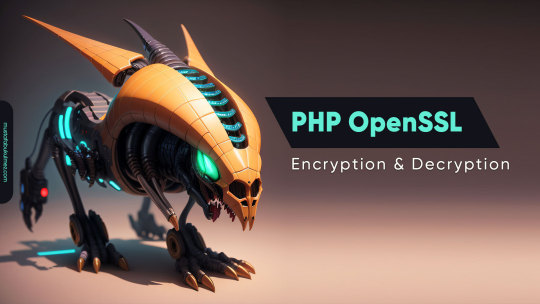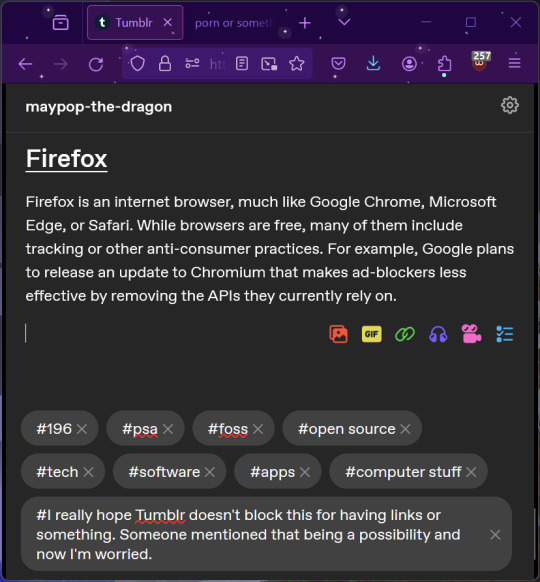#Advanced Encryption Standard
Explore tagged Tumblr posts
Text
PHP OpenSSL Encrypt & Decrypt
Merhabalar, bu yazımda PHP OpenSSL Encrypt & Decrypt konusuna değineceğim. Daha önceleri Encrypt & Decrypt konusunda bir yazı daha yazmıştım. Her ne kadar konu olarak aynı olsa da yöntem olarak farklı oldukları için yeni bir yazı olarak yazıyorum. Üstelik şifreleme üzerinde farklı programlama dillerine dair bir çok yazım var. Hepsini hemen aşağıya ekliyorum. PHP MD5 Şifreleme Kullanımı C#…

View On WordPress
0 notes
Text
Stolen Imperial Files - Valérie Glie

SUBJECT FILE: #7746-VG-RYL STATUS: AT LARGE THREAT LEVEL: HIGH DESIGNATION: GLIE, VALERIE (“Val”)

AGE: 26 SPECIES: TWI’LEK EYES: SILVER HEIGHT: 5'6" ALIAS: DESERT SARAD HOMEWORLD: RYLOTH TRAITS: DISPLAYS A CHARISMATIC AND ENGAGING PRESENCE—OFTEN FEISTY AND FLIRTATIOUS, THOUGH MARKED AT TIMES BY A SURPRISING EMOTIONAL RESERVE. TENDS TO MASK VULNERABILITY WITH SHARP WIT AND HUMOR, USING LEVITY AS A DEFENSE MECHANISM. WELL-LIKED AMONG PEERS, WITH A NATURAL ABILITY TO COMMAND ATTENTION AND NAVIGATE COMPLEX SOCIAL DYNAMICS. AFFILIATIONS: CHAM SYNDULA’S FREEDOM FIGHTERS
BIOGRAPHY: Valerie Glie is a known insurgent, former member of the Free Ryloth Movement, and biological sister to Gobi Glie (see file #7745-GG-RYL). Glie is classified as a Tier-1 fugitive by the Imperial Senate following her implication in an attempted assassination of Senator Orn Free Taa (see incident report #OFT-RYL-03-19). While conclusive evidence remains classified, Glie’s specialization in long-range weaponry and guerrilla tactics strongly suggests her involvement. Subject evaded initial detainment following the incident, reportedly with assistance from rogue Clone CT-7569 (designated deserter; current status: MIA). Glie disappeared from all known Imperial tracking channels shortly thereafter. A confidential report filed by Admiral Rampart (see ISB Inquiry #RMP-7569-GL) suggests CT-7569 and Glie may have shared an unprofessional and possibly romantic relationship during the Ryloth occupation. The nature of this connection, if verified, may explain the clone's deviation from standard programming and continued loyalty to Glie. Further inquiry suppressed under Imperial Directive 104-C due to potential embarrassment to command. Later, Glie was confirmed captured and processed through Zygerian slave intake channels, a rare point of recovery. During a scheduled transfer, the facility experienced a breach carried out by unidentified clone deserters (see ZYG-ESC-17-CLN). Subject escaped during the chaos. Subsequent raids on Imperial communications have traced encrypted data fragments believed to be linked to Glie, suggesting reactivation and resumption of insurgent activity. PROFILE NOTES Combat Role: Designated marksman / sniper; advanced training in stealth, infiltration, and asymmetrical warfare. Temperament: Uncooperative, highly disciplined, ideologically radicalized. Psychological Evaluation: Subject displays advanced emotional compartmentalization; demonstrates capacity for prolonged isolation, likely contributing to operational longevity. Linguistics: Fluent in Ryl, Galactic Basic, Zygerian dialects, and multiple black-market ciphers.

THE HUB
Ask to join the Tag List!
#oc valerie glie#ERC#echo recon#green girl productions#star wars#captain howzer#twilek#may the fourth#may the 4th#may the force be with you#may the fourth be with you#Star Wars event#may 4th#captain gregor#twi’lek#lekkU#sniper#clone commando gregor#star wars oc#star wars au
31 notes
·
View notes
Text
Hi yes I would like to start down this rabbit hole please because I'm totally normal about this ... I am convinced Jon and Martin are part of a tape drive. It links with the tapes from TMA and the trailer for TMP especially with the opening computer screen (I already posted about my thoughts on that).
What is a tape drive?
A tape drive is a device that stores computer data on magnetic tape, especially for backup and archiving purposes. Like an ordinary tape recorder, a tape drive records data on a loop of flexible celluloidlike material that can be read and also erased.
Tape drives differ from hard disk drives (HDDs) and solid-state drives (SSDs) in the way data is read and written to the storage media. Tapes store data sequentially, whereas HDDs and SSDs use rotating disks with rapidly moving seek heads, nonmoving flash memory or similar technology to transfer data.
Drives come in many sizes and capabilities. They are sold as standalone units or stacked in data center racks, creating tape libraries. The tapes themselves are often housed in sealed cassettes that can be inserted into the drive and activated.
There are several benefits to using tape drives, particularly for backup and archival uses. They include the following:
Capacity. Tapes have a large capacity for storing data when compared to HDDs.
Low cost. They are economical when compared to other storage media.
Life span. Tapes stored in a suitable environment can last for decades, an important factor for archival storage.
Transportable. Tapes can be easily moved from one location to another and are considered off-line storage.
Disaster recovery. Tape is often the storage medium of choice for data backup and DR. Storing critical systems and data on tape creates an air gap between systems that are at risk from cyber attacks simply by removing the tape cassette from the drive.
Security. Today, tapes support encryption such as Advanced Encryption Standard-256 and provide varying levels of data protection.



#the magnus archives#martin blackwood#jonathan sims#tma#jonmartin#the magnus protocol#magnus pod#tmp#tmp theory#jon sims#jmart#jonny sims#tape drive#tapes!#jmart is in the tapes!
191 notes
·
View notes
Text

ULTIMATE DANNY PHANTOM
TUCKER FOLEY
Tucker had his nose buried in his phone before it was cool. Beyond gaming, he loves tinkering with his many gadgets to find new and creative ways to optimize them. Having access to the spare parts bin from the Fentons' laboratory grants Tucker a veritable buffet of tech to play with. Using their old tech, Tucker created his beloved PDA. Hidden beneath its standard functions is an encryption-cracking algorithm Tucker developed himself, capable of hacking into the most secure computers in town. Once Danny got his powers, Tucker began upgrading a special backpack with even more FentonWorks tech to aid in ghost hunting. Tucker's "Battlepack" contains a powerful, compact radio receiver linked to his PDA which allows him to tap into police radio comms and the FentonWorks' satnav ghost radar. It also includes a link port compatible with Fenton Thermoses, allowing Danny and the team to inspect certain traits of captured ghosts. An integrated Fenton powerbank can charge up all manner of devices, from phones to Fenton Thermoses and beyond. While Tucker takes pride in his role as the team's tech guy, he harbors some jealousy over Danny getting superpowers. That doesn't stop him from being Danny's closest, most reliable and loyal friend.
Powers and Abilities
Multitasking: Heavy is the head that wears the crown. As the self-described brains of the operation, Tucker is thusly saddled with the responsibility to handle more of the complex strategizing that comes with ghost hunting. After all, one does not simply hunt a ghost on a school night. Tucker takes on the task of checking weather, traffic, security, and even variables like public transportation and community events while coordinating with the rest of Team Phantom during a hunt. Tucker's obsession with data and details often prevents him from seeing the bigger picture.
PDA: While Tucker is too insecure to realize or admit it, the PDA he created is practically a superpower of its own. The encryption-cracking algorithm he created is based on a primitive program found in a discarded FentonWorks hard drive, but Tucker's skill with tech advanced the program far beyond its original state. By plugging into any computer linked to a network, Tucker can gain full access to all of its protected files. At the time of its creation, WiFi was still in its infancy. Regardless, Tucker integrated state-of-the-art WiFi tech into his PDA, allowing it to remotely interface with networked devices. Tucker can coordinate nearly all of Team Phantom's operations from the little machine.
Gamer™: Tucker, like Danny, is a proud member of the PC master race. Tucker has one of the best rigs in town, built with his own two hands, and has poured countless hours into late nights playing DOOMED with Danny. Once word slipped that Sam was one of the best gamers in their group, Tucker made it his life's mission to beat her high score in Superman 64, or die trying.
Confidence: Despite his very nerdy interests, Tucker oozes self-confidence. That translates well when talking to peers and adults alike. When Danny needs a pep-talk (that doesn't involve screaming from Sam), he goes to Tucker for wise words of encouragement.
---
Tucker is immensely proud of this encryption-cracking algorithm, but recently it's given him cause for concern. During routine maintenance he'll sometimes discover lines of code that he didn't write. Other times the algorithm diagnostic log shows encryption-cracking attempts that he didn't initiate. It's almost as if the algorithm has taken on a life of its own...
12 notes
·
View notes
Text
Sophie Rain's Private Photos Leak – Uncensored Edition

The internet is ablaze with controversy surrounding Sophie Rain, an OnlyFans creator whose private content was leaked online. The Sophie Rain nude leak scandal has taken social media by storm, with her intimate moments, including a video of Sophie Rain nude masturbating, being shared across platforms without consent. This Sophie Rain OnlyFans leak violates her privacy and sparks a broader conversation about content creator safety and online sharing ethics.
Sophie Rain built a following on OnlyFans, sharing exclusive content with subscribers. Her profile features intimate material, including Sophie Rain nude. The recent Sophie Rain OnlyFans leak shattered the platform's security. The leaked content, including Sophie Rain nudes and a nude masturbation video, circulated online, leaving her vulnerable. The Sophie Rain leak nude incident shows how digital content can be misused.
The Sophie Rain OnlyFans leak reignited debates on OnlyFans' safety. While designed for creator control, incidents like the Sophie Rain nude leak show no system is foolproof. Online content can be copied and shared without consent, raising concerns about creator rights and platform prevention measures. The Sophie Rain nude masturbating video highlights the risks of sharing explicit content online.
Beyond technical issues, the Sophie Rain OnlyFans leak highlights ethical dilemmas of consuming leaked content. While some see the Sophie Rain nudes exposed scandal as entertainment, it harms Sophie Rain. The leak invades her privacy and violates her autonomy and consent. Unauthorized sharing undermines subscriber trust and exposes her to harassment. The Sophie Rain nude masturbating video is a personal moment not for public consumption.
The viral Sophie Rain OnlyFans leak highlights double standards in treating women who share explicit content. Female creators like Sophie Rain face judgment and victim-blaming when private content leaks. Online commentators often criticize creators instead of perpetrators, perpetuating harmful stereotypes and shifting blame. The Sophie Rain nude leak shows how society fails to protect women online.
After the Sophie Rain OnlyFans leak, we must prevent similar incidents. Platforms like OnlyFans should prioritize user security with stronger safeguards, including advanced encryption, unauthorized sharing monitoring, and swift action against rights violators. We need a cultural shift in viewing leaked content. Instead of sensationalizing it, we should prioritize empathy. The Sophie Rain nude masturbating video is a personal moment, not just content.
The leak impacts Sophie Rain's career and personal life. Whether she addresses it publicly or privately, she is not defined by this leak. She deserves dignity and respect. The Sophie Rain OnlyFans leak should prompt reflection on online behavior and privacy violations.
As the Sophie Rain nudes exposed scandal circulates, we must be sensitive. Sharing leaked content perpetuates harm. We should support creators like Sophie Rain and advocate for stronger protections. The Sophie Rain OnlyFans leak highlights digital vulnerabilities and calls for a safer online environment.
The Sophie Rain nude masturbating video is central to discussions on privacy, consent, and sharing ethics. The leak highlights creator challenges in the digital space. The Sophie Rain OnlyFans leak is a call for platforms, users, and society to prioritize creator well-being. By addressing these issues, we can prevent future incidents.
In conclusion, the Sophie Rain leak nude scandal, featuring her intimate moments, sparked widespread debate. The Sophie Rain OnlyFans leak highlights creator challenges in the digital age, from privacy violations to ethical dilemmas. As we navigate the online world, we must remember the human impact of such leaks and prioritize empathy. The Sophie Rain nude masturbating video is a personal moment deserving care. Let's reflect, learn, and work towards a safer online community.
7 notes
·
View notes
Text
The Evolution of Secure ID Features in Canadian Licenses
Canadian driver’s licenses have come a long way from being simple paper documents to highly sophisticated forms of identification. Today, they serve not just as proof of driving privileges but also as trusted government-issued IDs for everything from boarding a plane to opening a bank account. One of the key reasons they are so widely accepted is the constant evolution of security features built into them. Let’s take a look at how Canadian licenses have evolved to become some of the most secure forms of ID in the world.

1. Early Days: Basic Paper Licenses
In the early days, Canadian licenses were simple paper documents that included basic information: name, address, date of birth, and a photograph (sometimes stapled separately!). Security was minimal, making licenses easy to forge. At that time, the main concern was just proving that the holder was legally allowed to drive — not preventing identity theft or fraud.
However, as technology advanced and cases of fraud increased, governments realized the need for more sophisticated licenses.
2. Introduction of Plastic Cards and Photos
By the late 20th century, provinces began issuing plastic (PVC) cards with embedded photographs and magnetic strips. This change greatly improved durability and made it harder to tamper with licenses. Adding photographs was a major step toward making the license a true piece of personal identification, as it allowed authorities and businesses to visually verify the holder’s identity.
3. Holograms, Microprinting, and Barcodes
To combat forgery, licenses began to feature holographic overlays, microprinting, and 2D barcodes that store critical information digitally. Holograms, visible when tilted under light, are very difficult to replicate. Microprinting — tiny text only readable with magnification — added another layer of hidden security. Barcodes allowed fast electronic scanning by police and government agencies, making it easier to verify the validity of a license on the spot.
4. Enhanced Driver’s Licenses (EDLs)
Some provinces, such as Ontario, British Columbia, and Quebec, introduced Enhanced Driver’s Licenses (EDLs). These contain radio-frequency identification (RFID) chips to allow secure land and sea border crossings between Canada and the U.S. An EDL functions both as a driver’s license and a limited travel document, meeting specific international security standards.
5. Smart Technology and Future Innovations
Today, discussions are underway about digital driver’s licenses — licenses you can store on your smartphone with enhanced encryption to prevent misuse. Provinces like Quebec and Ontario are exploring pilot programs for digital ID systems that would tie your license into a broader network of secure government services. Biometric authentication (such as facial recognition) is also being explored to further bolster license security in the future.
The evolution of secure ID features in Canadian licenses shows a commitment to protecting personal identity while enabling smooth access to government and private services. As new technologies emerge, you can expect even more innovation in the years ahead.
Want to stay ahead and understand everything about Canadian licensing? Whether you're applying for your first license or updating an existing one, LicensePrep.ca is your go-to source for detailed guides, practice tests, and the latest updates on ID requirements across Canada!
#CanadianDriversLicense#IDSecurity#LicenseSecurityFeatures#EnhancedDriversLicense#DigitalLicenseCanada#LicensePrepCanada#IdentityProtection#SecureID#DrivingInCanada#LicenseEvolution
4 notes
·
View notes
Text
PSA: Free Software
Reading this may really save your time, privacy, and money! Reblog or share to spread awareness!
Folks often use software that’s expensive and sometimes even inferior because they don’t know there are alternatives. So to those unfamiliar: basically, free and open-source (FOSS) or "libre" software is free to use and anyone can access the original code to make their own version or work on fixing problems.
That does not mean anyone can randomly add a virus and give it to everyone—any respectable libre project has checks in place to make sure changes to the official version are good! Libre software is typically developed by communities who really care about the quality of the software as a goal in itself.
There are libre alternatives to many well-known programs that do everything an average user needs (find out more under the cut!) for free with no DRM, license keys, or subscriptions.
Using libre software when possible is an easy way to fight against and free yourself from corporate greed while actually being more convenient in many cases! If you need an app to do something, perhaps try searching online for things like:
foss [whatever it is]
libre [whatever it is]
open source [whatever it is]
Feel free to recommend more libre software in the tags, replies, comments, or whatever you freaks like to do!
Some Libre Software I Personally Enjoy…
LibreOffice
LibreOffice is an office suite, much like Microsoft Office. It includes equivalents for apps like Word, Excel, and Powerpoint, which can view and edit files created for those apps.

I can't say I've used it much myself yet. I do not personally like using office software except when I have to for school.
OpenShot
OpenShot Video Editor is, as the name suggests, a video editing program. It has industry-standard features like splicing, layering, transitions, and greenscreen.

I've only made one video with it so far, but I'm already very happy with it. I had already paid for a video editor (Cyberlink PowerDirector Pro), but I needed to reinstall it and I didn't remember how. Out of desperation, I searched up "FOSS video editor" and I'm so glad I did. There's no launcher, there's no promotion of other apps and asset packs—it's just a video editor with a normal installer.
GIMP
GNU Image Manipulation Program is an image editor, much like Photoshop. Originally created for Linux but also available for Windows and MacOS, it provides plenty of functionality for editing images. It is a bit unintuitive to learn at first, though.

I've used it to create and modify images for years, including logos, really bad traceover art, and Minecraft textures. It doesn't have certain advanced tech like AI paint-in, but it has served my purposes well and it might just work for yours!
(Be sure to go to Windows > Dockable Dialogs > Colors. I have no idea why that's not enabled by default.)
Audacity
Audacity is an audio editing program. It can record, load, splice, and layer audio files and apply effects to them.

Audacity is another program I've used for a long time. It is not designed to compose music, but it is great for podcasts, simple edits, and loading legacy MS Paint to hear cool noises.
7-Zip
7-Zip is a file manager and archive tool. It supports many archive types including ZIP, RAR, TAR, and its own format, 7Z. It can view and modify the contents of archives, encrypt and decrypt archives, and all that good stuff.

Personally, I use 7-Zip to look inside JAR files for Minecraft reasons. I must admit that its UI is ugly.
Firefox
Firefox is an internet browser, much like Google Chrome, Microsoft Edge, or Safari. While browsers are free, many of them include tracking or other anti-consumer practices. For example, Google plans to release an update to Chromium (the base that most browsers are built from these days) that makes ad blockers less effective by removing the APIs they currently rely on.

Aside from fighting monopolies, benefits include: support for animated themes (the one in the picture is Purple Night Theme), good ad blockers forever, an (albeit hidden) compact UI option (available on about:config), and a cute fox icon.
uBlock Origin
As far as I know, uBlock Origin is one of the best ad blockers there is.

I was on a sketchy website with my brother, and he was using Opera GX's ad blocker. Much of the time when he clicked on anything, it would take us to a random sponsored page. I suggested that he try uBlock Origin, and with uBlock Origin, that didn't happen anymore.
Linux
Linux is a kernel, but the term is often used to refer to operating systems (much like Windows or MacOS) built on it. There are many different Linux-based operating systems (or "distros") to choose from, but apps made for Linux usually work on most popular distros. You can also use many normally Windows-only apps on Linux through compatibility layers like WINE.




I don't have all four of these, so the images are from Wikipedia. I tried to show a variety of Linux distros made for different kinds of users.
If you want to replace your operating system, I recommend being very careful because you can end up breaking things. Many computer manufacturers don't care about supporting Linux, meaning that things may not work (Nvidia graphic cards notoriously have issues on Linux, for example).
Personally, I tried installing Pop!_OS on a laptop, and the sound output mysteriously doesn't work. I may try switching to Arch Linux, since it is extremely customizable and I might be able to experiment until I find a configuration where the audio works.
Many Linux distros offer "Live USB" functionality, which works as both a demo and an installer. You should thoroughly test your distro on a Live USB session before you actually install it to be absolutely sure that everything works. Even if it seems fine, you should probably look into dual-booting with your existing operating system, just in case you need it for some reason.
Happy computering!
#196#psa#foss#open source#tech#software#apps#computer stuff#I really hope Tumblr doesn't block this for having links or something. Someone mentioned that being a possibility and now I'm worried.#please reblog#2024-01-26
47 notes
·
View notes
Text
Print "Hello World"
Who I Am
My name is Emmanuel Igboanusi, and I’ve always had a passion for technology, particularly in the realm of security. Outside of tech, one of my biggest hobbies is riding motorcycles, which allows me to appreciate both speed and precision. I’m currently taking a technology program because I want to dive deeper into how we can protect sensitive data and improve cybersecurity systems. Through this class, I hope to gain valuable insights that will help me become a better security professional.
Areas of Interest and Strength
I’m especially interested in cybersecurity. My focus is on protecting data, analyzing potential threats, and ensuring that confidential information is safe from unauthorized access. I find it fascinating to explore different ways to confiscate compromised data and mitigate risks before they escalate. I also enjoy hands-on experiences like working with servers, configuring networks, and ensuring they meet compliance standards. I hope to develop my skills further, especially in the areas of ethical hacking and encryption technologies.
Emerging Technologies
Emerging technologies refer to cutting-edge developments that have the potential to disrupt industries and change the way we live and work. These can include advancements like artificial intelligence (AI), and blockchain. I believe staying up to date on these technologies is crucial, especially as they play a major role in enhancing security frameworks. Understanding and integrating these innovations will help to better protect systems and data in the future.
9 notes
·
View notes
Text
A Symbolic Duel of the Skies
When it comes to iconic aircraft, two names soar above the rest: Air Force One, the official aircraft of the sitting U.S. president, and Trump Force One, the private Boeing 757 jet owned by Donald Trump. While one symbolizes the institutional power of the United States government, the other epitomizes the flair and individuality of a man who thrives on spectacle. Let’s delve into the differences, similarities, and the symbolic weight each carries.

Air Force One: The Flying White House
Air Force One isn’t just an airplane—it’s a fortress in the sky. Operated by the U.S. Air Force, this customized Boeing 747 (VC-25) represents the full might of the federal government. Equipped with advanced defense systems, encrypted communications, and the ability to refuel midair, it ensures that the president can command the country even in the most turbulent times.
Beyond its military-grade specifications, the interiors are functional yet dignified: a medical suite, offices, conference rooms, and a space for press briefings. The blue and white livery, designed during JFK’s administration, projects a timeless elegance. Every flight embodies the continuity of American democracy.
Trump Force One: A Flying Statement
In contrast, Trump Force One is unabashedly personal and extravagant. This Boeing 757, emblazoned with the Trump name in gold, is less about function and more about flair. The interiors include 24-karat gold seatbelt buckles, leather seating, and a private bedroom. If Air Force One is a symbol of collective power, Trump Force One is a testament to individual ambition.
The jet made headlines during Trump’s 2016 campaign, often serving as a backdrop for rallies. It became a potent visual tool, reinforcing his outsider status and business success. After a hiatus during his presidency, the jet has recently been refurbished, signaling its owner’s ongoing political ambitions.
Technology and Capability: A Tale of Two Standards
Air Force One: Unparalleled security and cutting-edge technology make it the most sophisticated aircraft in the world. It’s EMP-hardened, armed with countermeasures against missile threats, and capable of functioning as a command center during national emergencies.
Trump Force One: While luxurious, it lacks the defensive and operational capabilities of Air Force One. Its primary purpose is comfort and style, with no pretensions of handling global crises.
Symbolism: National Power vs. Personal Branding
Air Force One transcends politics, representing the presidency itself regardless of who occupies the office. It is steeped in tradition and is a reminder of the gravity of the role it serves.
Trump Force One, on the other hand, is the embodiment of Donald Trump’s personal brand. It’s loud, unapologetic, and designed to command attention—whether on a runway or in the political arena.
Which Reigns Supreme?
Comparing Trump Force One and Air Force One is like comparing apples and oranges. One is a utilitarian marvel of government power; the other, a luxury jet tailored to a billionaire’s tastes. Both, however, reflect the man who commands them: the sitting president flies Air Force One as a steward of the nation, while Trump Force One is a vehicle for a businessman-turned-politician who thrives on the spectacle.
What’s fascinating is how these aircraft have become symbols of two very different approaches to leadership. Air Force One speaks to duty and decorum, while Trump Force One projects confidence and charisma. Together, they encapsulate the tensions and contrasts in American political life today.
#Air Force One#Trump Force One#Presidential Aircraft#Donald Trump#U.S. Presidency#Aviation#Political Symbols#Luxury Jets#Boeing 747#Boeing 757#American Politics#Aircraft Comparison#White House#National Security#Political Branding#Trump 2024#Leadership Styles#Aviation Technology#Flying White House#Presidential Travel#today on tumblr#new blog
8 notes
·
View notes
Text
How Do Healthcare BPOs Handle Sensitive Medical Information?
Healthcare BPO Services

Handling sensitive and personal medical and health data is a top priority in the healthcare industry as it can be misused. With growing digital records and patient interactions, maintaining privacy and compliance is more important than ever and considered to be a tough role. This is where Healthcare BPO (Business Process Outsourcing) companies play a critical role.
As these providers can manage a wide range of healthcare services like medical billing, coding and data collection, claims processing and settlements, and patient on-going support, all while assuring the strict control over sensitive health information is maintained and carried out on the go.
Here's how they do it:
Strict Data Security Protocols -
Healthcare companies implement robust security frameworks to protect patient information and personal details that can be misused. This includes encryption, firewalls, and secure access controls. Only the concerned and authorized personnel can get the access towards the medical records and data, as all our available on the go all data transfers are monitored to avoid breaches or misuse.
HIPAA Compliance -
One of the primary and key responsibilities of a Healthcare BPO is to follow HIPAA (Health regulations policies and acts with standard set regulations). HIPAA sets the standards for privacy and data protection. BPO firms regularly audit their processes to remain compliant, ensuring that they manage patient records safely and legally.
Trained Professionals -
Employees working and the professionals in Healthcare services are trained and consulted in handling and maintaining the confidential data. They understand how to follow the strict guidelines when processing claims, speaking with patients, or accessing records. As this training reduces and lowers down the risk and potential of human error and assures professionalism is maintained at every step.
Use of Secure Technology -
Modern Healthcare BPO operations rely on secure platforms and cloud-based systems that offer real-time protection. Data is stored and collected in encrypted formats and segments, and advanced monitoring tools and resources are used to detect the unusual activity that prevent cyber threats or unauthorized access.
Regular Audits and Monitoring -
Healthcare firms conduct regular security checks and compliance audits to maintain high standards. These assist to identify and address the potential risks at the early stage and ensure all the systems are updated to handle new threats or regulations.
Trusted Providers in Healthcare BPO:
The reputed and expert providers like Suma Soft, IBM, Cyntexa, and Cignex are known for delivering secure, HIPAA-compliant Healthcare BPO services. Their expertise in data privacy, automation, and healthcare workflows ensures that sensitive medical information is always protected and efficiently managed.
#it services#technology#saas#software#saas development company#saas technology#digital transformation#healthcare#bposervices#bpo outsorcing
4 notes
·
View notes
Text
Integration of AI in Driver Testing and Evaluation
Introduction: As technology continues to shape the future of transportation, Canada has taken a major leap in modernizing its driver testing procedures by integrating Artificial Intelligence (AI) into the evaluation process. This transition aims to enhance the objectivity, fairness, and efficiency of driving assessments, marking a significant advancement in how new drivers are tested and trained across the country.

Key Points:
Automated Test Scoring for Objectivity: Traditional driving test evaluations often relied heavily on human judgment, which could lead to inconsistencies or perceived bias. With AI-driven systems now analysing road test performance, scoring is based on standardized metrics such as speed control, reaction time, lane discipline, and compliance with traffic rules. These AI systems use sensor data, GPS tracking, and in-car cameras to deliver highly accurate, impartial evaluations, removing potential examiner subjectivity.
Real-Time Feedback Enhances Learning: One of the key benefits of AI integration is the ability to deliver immediate feedback to drivers once the test concludes. Drivers can now receive a breakdown of their performance in real time—highlighting both strengths and areas needing improvement. This timely feedback accelerates the learning process and helps individuals better prepare for future driving scenarios or retests, if required.
Enhanced Test Consistency Across Canada: With AI systems deployed uniformly across various testing centres, all applicants are assessed using the same performance parameters and technology. This ensures that no matter where in Canada a person takes their road test, the evaluation process remains consistent and fair. It also eliminates regional discrepancies and contributes to national standardization in driver competency.
Data-Driven Improvements to Driver Education: AI doesn’t just assess drivers—it collects and analyses test data over time. These insights are then used to refine driver education programs by identifying common mistakes, adjusting training focus areas, and developing better instructional materials. Platforms like licenseprep.ca integrate this AI-powered intelligence to update practice tools and learning modules based on real-world testing patterns.
Robust Privacy and Data Protection Measures: As personal driving data is collected during AI-monitored tests, strict privacy policies have been established to protect individual information. All recorded data is encrypted, securely stored, and only used for training and evaluation purposes. Compliance with national data protection laws ensures that drivers’ privacy is respected throughout the testing and feedback process.
Explore More with Digital Resources: For a closer look at how AI is transforming driver testing in Canada and to access AI-informed preparation materials, visit licenseprep.ca. The platform stays current with tech-enabled changes and offers resources tailored to the evolving standards in driver education.
#AIDrivingTests#SmartTesting#DriverEvaluation#TechInTransport#CanadaRoads#LicensePrepAI#FutureOfDriving
4 notes
·
View notes
Text
Young Adult Nigel Uno/Numbuh 1
Appearance: Nigel stands at 5'5"ft, his lean but athletic build a testament to years of rigorous training and leadership. His iconic bald head remains unchanged, now giving him a more commanding and refined presence. His sharp facial features—high cheekbones, a strong jawline, and a slightly furrowed brow—add to his intense and calculating demeanor. His signature sunglasses have been upgraded to a sleeker, more high-tech design, seamlessly integrating with his tactical gear. Whether resting on the bridge of his nose or hanging from his coat pocket, they remain an unmistakable part of his identity. Nigel’s attire exudes cool professionalism, blending formality with a tactical edge. He wears a perfectly tailored long coat , either deep navy or charcoal gray, fitted yet flexible for movement. Underneath, a crisp button-up dress shirt , usually black or dark blue, remains neatly pressed, with the top button undone for a touch of effortless style. His slim-fit dress pants are subtly reinforced for durability, allowing him to move with precision when necessary. On his feet, sleek black dress boots complete the ensemble—polished enough for formal meetings yet rugged enough for action. A minimalist but highly advanced wristwatch rests on his left wrist, its seemingly simple design hiding encrypted communication functions. His belt, while appearing standard, contains hidden compartments for small tools or gadgets, always keeping him prepared.
Personality: As a young adult, Nigel Uno has grown into a composed and strategic thinker, retaining his unshakable determination while refining his once rigid, all-business approach. No longer affiliated with the KND, TND, or GKND, he operates independently, guided by pragmatism, discipline, and a strong moral compass, While still highly logical and tactical, he now values adaptability, assessing situations with patience rather than rushing into action. His quiet confidence and composure naturally draw people in, and though he is not overly talkative, his words are always measured, direct, and impactful, often laced with dry wit. Experience has tempered his idealism, teaching him that the world isn’t just black and white—he acknowledges the gray areas of conflict and decision-making, making him a more nuanced and perceptive individual. Though he keeps most people at a professional distance, those who earn his trust find a fiercely loyal and dependable ally. He respects competence and integrity, valuing actions over words. While no longer the idealistic child he once was, at his core, Nigel Uno remains a leader, a strategist, and a protector—one who now operates on his own terms.
Headcannons
Early Riser, Efficient Routine: Nigel is an early riser, beginning his day before sunrise with a disciplined routine. He starts with a cold shower to invigorate himself, followed by catching up on the news and a light workout to stay sharp. Efficiency is his mantra; he despises wasting time on trivial distractions. Every moment of his morning is meticulously planned, ensuring he’s prepared for whatever the day throws at him. This structured approach reflects his broader philosophy: time is a resource, and he intends to use it wisely.
Minimalist Living: Nigel’s living space is a testament to his minimalist mindset. His apartment—or wherever he stays—is impeccably tidy, with only the essentials in sight. He avoids sentimental clutter, believing it distracts from practicality. However, he does keep one well-preserved memento from his childhood, tucked away in a private spot. This single item serves as a quiet reminder of his roots, a rare concession to sentimentality in an otherwise no-nonsense lifestyle.
Unmatched Poker Face: Years of training and experience have honed Nigel’s ability to remain unreadable. His expressions rarely betray his emotions, making it nearly impossible for others to discern his thoughts. This skill is invaluable in high-stakes situations, where revealing too much could be a liability. However, those who know him well can detect subtle shifts in his demeanor, a testament to their deep understanding of his character.
Deep but Selective Loyalty: Nigel’s trust is hard to earn but unwavering once given. He values competence and integrity above all, and his closest allies are those who prove themselves through actions rather than words. His loyalty is not blind; it’s earned through mutual respect and shared values. Once someone has his trust, he will go to great lengths to protect and support them, making him a steadfast and reliable ally.
Reads People Instinctively: Nigel’s sharp observational skills allow him to read people with remarkable accuracy. He analyzes body language, tone, and subtle cues to gauge true intentions, making him a skilled negotiator and strategist. This ability to see beneath the surface enables him to stay several steps ahead in any interaction. Whether in a boardroom or a battlefield, Nigel’s insight into human behavior is a formidable asset.
Prefers Function Over Fashion, But Still Looks Cool: Nigel’s wardrobe is a blend of practicality and understated style. He favors tailored coats, dress shirts, and tactical wear in neutral or dark colors, all designed for mobility and ease of movement. While he prioritizes function over fashion, his refined choices give him a cool, composed appearance. His attire reflects his personality: simple, efficient, and always prepared.
Carries a Notebook Instead of Using a Phone for Planning: Despite being technologically adept, Nigel prefers to carry a notebook for planning and note-taking. He finds that writing things down helps him focus and organize his thoughts more effectively. His notebook is a repository of observations, strategies, and insights on people and places he encounters. This analog approach underscores his intentionality and attention to detail.
Understands the Necessity of Violence, But Doesn't Enjoy It: Nigel is a highly skilled fighter, but he views combat as a last resort. He prefers to resolve conflicts through logic and strategy rather than force. However, when violence is unavoidable, he is precise, efficient, and controlled, never acting recklessly. His approach to conflict reflects his broader philosophy: every action should have a purpose, and unnecessary risks are to be avoided.
Still Has a Sense of Humor, But It's Sharper and Drier: Though serious and composed, Nigel hasn’t lost his sense of humor. His wit is sharp and dry, often catching people off guard with perfectly timed remarks delivered with a straight face. This subtle humor adds depth to his character, revealing a lighter side that contrasts with his otherwise stoic demeanor.
Respected But Not Untouchable: Nigel is a respected leader, but his style has evolved over time. He now listens more, values input from his team, and delegates responsibilities rather than shouldering everything alone. His team sees him as a backbone but also recognizes his humanity. This balance of authority and approachability makes him an effective and admired leader.
The Older Brother Figure: Nigel naturally takes on the role of an older brother, especially with Wally and Hoagie. He keeps them in check but also relaxes around them, allowing himself to joke and be less serious. He nudges Wally toward maturity and respects Hoagie’s intellect, often engaging him in discussions about tactics and strategy. This dynamic highlights his protective yet nurturing nature.
Still Has High Standards, But More Understanding: Nigel expects competence and discipline but has grown more patient over time. He knows when to push and when to let go, helping others learn from their mistakes rather than simply reprimanding them. This evolution in his leadership style reflects a deeper understanding of human growth and the value of mentorship.
Protective, But Knows When to Step Back: While Nigel is protective of his friends, he no longer overprotects them as he did in his youth. He trusts them to handle their own challenges but remains watchful, ready to step in if necessary. This balance between support and independence strengthens his relationships and fosters mutual respect.
Can Switch From Warm to Dead Serious Instantly: Nigel’s demeanor can shift instantly from warm and relaxed to calm and calculated. With his friends, he’s open and witty, but when a situation turns serious, he becomes focused and composed. This ability to adapt his presence to the moment is both impressive and intimidating, showcasing his versatility as a leader.
Enjoys Solitude but Not Isolation: Nigel values alone time for reflection, journaling, or reading, but he no longer isolates himself emotionally. He chooses to be present with his friends, balancing his need for solitude with meaningful connections. This shift reflects his growth and willingness to embrace vulnerability.
Professor of Strategy and Tactics: Nigel takes his vast knowledge of warfare and leadership into academia, becoming a highly respected professor specializing in historic wars, battle strategies, and tactical warfare. His lectures are known for their depth, real-world applications, and intense yet engaging teaching style.
Tough but Fair Mentor: While Nigel has high expectations, he genuinely cares about his students' success. He challenges them to think critically, question traditional tactics, and develop their own strategic reasoning. Despite his stern demeanor, he takes time to mentor those who show potential, earning deep respect from his students.
Guest Lecturer and Consultant: His expertise makes him a sought-after speaker for military academies and strategic think tanks. While he prefers teaching, he occasionally consults on high-level tactical matters, providing insight into unconventional warfare.
Respected by All: Whether in the field or the classroom, Nigel commands respect. His presence alone demands attention, and his words carry weight. His students, peers, and old teammates know that if Nigel Uno speaks, it’s worth listening to.
Friday Night Tradition: Every two Fridays, Nigel and Wally have an unspoken agreement to meet up at a local bar for drinks. It started as a casual catch-up but quickly became a tradition—a way for them to unwind from their responsibilities and reminisce about their KND days. Wally, being more social, drags Nigel into conversations with strangers, while Nigel mostly listens, offering his occasional dry humor and strategic insights into whatever wild scenario Wally is ranting about. Though Nigel isn’t a heavy drinker, he enjoys the routine and the sense of normalcy it brings. It’s one of the few times he allows himself to truly relax, and despite his more serious nature, he appreciates the bond they share over these nights out.
Boys’ Night Regular: Despite his initial reluctance, Nigel has become a semi-regular at "Boys’ Night" with Wally, Hoagie, Patton, and occasionally other former KND operatives. At first, he wasn’t sure if it was his thing—he's not as loud or competitive as the rest of them—but over time, he found himself enjoying the camaraderie. Whether it’s game night, grilling out, or just hanging around talking about life, Nigel values these moments more than he admits. It gives him a chance to let his guard down, to not always be the responsible leader, and just enjoy being part of a group again. Even though Wally insists Nigel should “loosen up” more, the others appreciate his dry wit and surprising talent for strategy-based games. These nights remind Nigel that, no matter how much life changes, some friendships remain constant.
Office of Secrets: His office is a reflection of his past, filled with books, maps, and relics from historical battles. A few subtle nods to his childhood missions exist, though he never explicitly confirms their significance. His students often wonder if their professor has lived through the strategies he teache
Still Can’t Fully Relax, But He Tries: Nigel struggles to fully unwind, but his friends help him relax, whether it’s Hoagie dragging him into a movie night or Wally handing him a game controller. These moments of forced relaxation are a reminder that even the most disciplined individuals need downtime.
No Longer Sees the World in Black & White: As a younger man, Nigel viewed the world in stark terms of good versus evil. However, experience has taught him the value of nuance and the complexity of human nature. While this understanding has made him wiser, it has also burdened him with more difficult decisions. He now recognizes that not every situation has a clear-cut answer, and this awareness shapes his approach to leadership and life.
Still Has Moments of Doubt, But Hides Them Well: Despite his confident exterior, Nigel occasionally grapples with doubt. There are nights when he questions whether he’s making the right decisions or leading his team in the best direction. He hides these moments well, masking his uncertainty with composure, but they reveal the depth of his introspection and the weight of his responsibilities.
Has a ‘You Can Always Call Me’ Policy: No matter the time or how busy he is, Nigel makes it clear that his friends can always reach out to him. He might not always have the answers, but he’ll be there to listen, support, or offer guidance. This unwavering reliability is a cornerstone of his relationships, demonstrating his loyalty and commitment to those he cares about.
Prefers a Clean & Organized Space, But Knows When to Let Go: Nigel values a tidy and functional living space, but he’s not obsessive about it. He understands that messes can be a sign of life and fun, especially when his friends are around. While he prefers order, he knows when to let go and enjoy the moment, balancing his need for structure with the joy of spontaneity.
Still Eats Simple Foods Like Toast & Cereal When Rushed: Despite his growth and maturity, Nigel hasn’t outgrown his practical approach to meals. When he’s focused or in a hurry, he defaults to simple, quick foods like toast or cereal. This habit is a nod to his no-nonsense attitude and his ability to prioritize efficiency, even in the smallest aspects of life.
Has a Signature "Thinking Pose": Nigel has a distinctive way of showing he’s deep in thought, whether it’s crossing his arms, rubbing his chin, or tilting his head. His friends recognize this pose and know to give him space to process before speaking. This quiet moment of reflection is a hallmark of his thoughtful and deliberate nature.
Doesn’t Show Off, But Has a Quiet Confidence: Unlike some of his peers, Nigel doesn’t feel the need to flaunt his abilities. His confidence is understated but unmistakable, radiating through his calm demeanor and precise actions. People instinctively sense that he’s not someone to be underestimated, even without overt displays of strength or skill.
Can Still Be a Little Stubborn, But Has Learned to Listen: While Nigel can be stubborn, he’s grown to recognize the value of listening to others. He no longer insists on making every decision himself and has learned to trust the input of his team. This evolution in his leadership style reflects his maturity and his understanding that collaboration often leads to better outcomes.
Understands Wally: Nigel and Wally share a bond that often transcends words. A simple nod, glance, or pat on the back is enough to convey trust, loyalty, and mutual respect. This silent understanding is a testament to the depth of their friendship and the years of shared experiences that have solidified their connection.
Still Struggles to Open Up About Himself: While Nigel is an excellent listener and advisor, he finds it difficult to open up about his own struggles. Only a select few people get to see this vulnerable side of him, as he prefers to keep his emotions guarded. This reluctance to share reflects his deeply private nature and the weight he carries as a leader.
No Longer Feels the Need to Prove Himself: As a younger leader, Nigel often felt the need to prove his worth and capabilities. Now, he’s confident enough to let his actions speak for themselves. This shift in mindset has allowed him to lead with greater authenticity and focus on what truly matters, rather than seeking validation from others.
Understands That Not Everything Can Be Fixed: Nigel has come to terms with the fact that not every problem has a solution. While he still strives to resolve issues whenever possible, he recognizes that some things must be accepted and moved on from. This acceptance has brought him a sense of peace and resilience, even in the face of challenges.
Never Lets His Guard Down Completely: Even in moments of relaxation, Nigel maintains a level of awareness. Years of leadership and high-stakes situations have ingrained in him a habit of always being prepared. While he’s learned to relax more than he used to, he’s never fully off-duty, a testament to his unwavering sense of responsibility.
Has a Quiet Pride in His Team: While Nigel isn’t one for grand gestures or effusive praise, he takes quiet pride in his team’s accomplishments. He shows his appreciation through small, meaningful actions, like a nod of approval or a rare compliment. His team knows that his quiet pride is hard-earned and deeply genuine.
Rarely Takes a Day Off, But Should: Nigel’s work ethic is unmatched, and he rarely takes a full day off. Even on supposed rest days, he’s often found reviewing plans, reading, or engaging in light training. His friends occasionally have to intervene, reminding him that even the most dedicated leaders need to recharge. While he acknowledges their point, stepping away completely still feels unnatural to him.
Has a Soft Spot for Animals: Despite his tough exterior, Nigel has a soft spot for animals, especially dogs. He admires their loyalty and straightforward nature, qualities he values in people as well. If he ever has a pet, it’s likely a well-trained, no-nonsense breed that matches his personality. This unexpected tenderness adds depth to his character, showing that even the most disciplined individuals have their softer side.
Still Dreams Big, But Grounded in Reality: While Nigel has matured and become more pragmatic, he hasn’t lost his ability to dream big. He balances his ambitions with a clear-eyed understanding of what’s achievable, setting goals that are challenging yet realistic. This blend of vision and practicality makes him a formidable leader and a steady presence in any situation.
5 notes
·
View notes
Text
Modern Cryptography
(stemandleafdiagram long-form post!)
~ 2900 words
As you may have guessed, I love cryptography and ciphers even though I still don’t know much about them. I think classical ciphers are super interesting stuff and I love breaking them but I realised I knew nothing cipher-y after the end of World War 2, so I sought to rectify that!
(This is SO long - I got quite carried away (I do apologise), and as I wanted to cover so much here there are some concepts I don’t explain very thoroughly, but there are so many resources online if you want to learn more! When explaining how different forms of encryption work, I will often use the names commonly used by other cryptographers in my examples. Alice and Bob are two people trying to communicate, while Eve (an eavesdropper) is trying to intercept their messages.)
Symmetric Encryption
The start of modern cryptography is not a definite thing (obviously so, as the “eras” of cryptography are just labels people use to refer to them generally) but I decided to start my timeline for modern cryptography in the 1960s, as during this time, research projects at the American company IBM (International Business Machines) led to the creation of a cipher called the Lucifer cipher.
This cipher was one of the first block ciphers to be made. A block cipher is a cipher that operates on blocks of 128 bits at a time. This is in contrast to a stream cipher, which encrypts 1 bit of data at a time. (In a way, you could consider classical ciphers stream ciphers) If the plaintext (un-encrypted data) is smaller than 128, padding schemes will add random data to it to make it up to 128. Modes of operation define how large amounts of data are encrypted. For example, the blocks of data can be encoded separately, or maybe the encryption of one block is affected by the previous encoded block of data.
The Lucifer cipher underwent a lot of alterations, and eventually the National Bureau of Standards adopted this altered version of Lucifer as the Data Encryption Standard, or DES, in 1977. Some of the alterations made that led to DES were actually quite controversial! For example, the key size in Lucifer was 128 bits, but only 56 in DES, which worried people who thought it would have been easier to brute force as it was shorter. It’s actually rumoured that the NSA (National Security Agency) did this so that the DES wasn’t too strong for them to break. Another change they added was the inclusion of something called S-boxes, which are effective at protecting against a form of attack called differential cryptanalysis. What I found really cool was that its effectiveness wasn’t talked about until much after, which suggests that the NSA knew about differential cryptanalysis 13 years before this information went public!
The DES is no longer secure enough for modern use, and in 2001 was replaced by the AES, or the Advanced Encryption Standard, which is its direct successor and is still used today. The reason that AES is more secure than DES is that the algorithm itself is more complex, but more importantly it uses longer key lengths. Using keys that are 128, 192, or 256-bit long means that the encryption is much stronger than using the 56-bit DES.
Lucifer, DES, and AES are all symmetric ciphers as well as being block ciphers. This means that the key used to encrypt the plaintext is the same key that is used to decrypt the data. Only some block ciphers are known publicly. DES and AES are the most famous of the lot, but other ones such as IDEA, Twofish, and Serpent exist too.
As a whole, encrypting with block ciphers is slower as the entire block must be captured to encrypt or decrypt, and if just 1 mistake is made the whole block can be altered. But, they are stronger than other ciphers. Each mode of operation also has its own pros and cons. If each block is encoded by itself then they can be encrypted in parallel (which is faster), but it’s prone to cryptoanalysis as two identical blocks of plaintext would produce two identical blocks of ciphertext, therefore revealing patterns. The other ways are much more complex and take more time to encrypt but are more secure.
For symmetric encryption to be used, both parties need to agree on the same key for the message to be shared secretly, which is a massive problem. How can the key be transferred securely?
Key Exchange
A year before the implementation of DES, in 1976, another massive breakthrough was made. Researchers Whitfield Hellman and Martin Diffie created the Diffie-Hellman key exchange, which was a method to share encryption and decryption keys safely across an unsecured network. The way it works depends on one-way functions. Typically in maths, most functions are two-way, as using a function on a number is pretty easy to undo. However, Hellman and Diffie found out that while multiplying two prime numbers was very easy, factorising the product down to its primes again was excruciatingly difficult, and the difficulty only increases as the numbers get bigger.
Say Alice and Bob are trying to share a key using the Diffie-Hellman exchange. Firstly, both of them need to execute a function in the form G^a mod P. P must be prime, and G and P are shared publicly so Alice and Bob can agree on them. The numbers are massive (usually 2048 bits) to make it harder to brute force, and they are generated randomly. Alice and Bob each choose different numbers for a, and run their functions. They will get different answers and they share their answers with each other publicly. (This is the public key) Then, Alice and Bob run another function in the form G^a mod P, but G is set to the other person’s answer. The value of a and P stay the same, and Alice and Bob arrive at the same secret answer. The secret answer can then be used to encrypt the message! (This is the private key)
Now, let’s say Eve wanted to find out what the key was. She intercepts their messages, but even though she has the exact information Alice and Bob shared with each other, she doesn’t know what the secret key is unless she solved the original equation, making this key exchange very secure! Modular arithmetic (the mod P part of the equation) is notoriously hard to reverse. If 2048-bit numbers are used, then brute forcing it requires 2^2048 numbers.
Asymmetric Encryption
The Diffie-Hellman key exchange was huge - I mean, any technology created 50 years ago that’s still in use must be pretty good, but it really only shone for sharing keys, not for encryption. For example, the issue with sending communication such as emails using Diffie-Hellman was that both parties needed to be online for a key to be generated as information needs to be mutually shared in the process, so you couldn’t just send an email using it whenever you wanted, which was a shame. However, one particular thing it did lead to was the invention of asymmetric encryption.
In 1977, the idea of public key cryptography (also invented by Diffie) came to fruition in the form of RSA. Named after its creators (Ron Rivest, Adi Shamir, and Leonard Adleman), the RSA works by all users having a public key, which is accessible by everyone, so anyone wanting to send that user a message just needed to search for it. The sender encrypts the message with the recipient’s public key, and then when the recipient comes online they are able to decrypt it with their own private key that’s not shared with anyone. It also uses an one-way function like the Diffie-Hellman exchange, albeit a more complex one. RSA is still used today for things like sending messages or visiting secure websites, and the keys tend to be 2048 or 4096 bits long so that they are hard to break. 1024-bit RSA was disallowed in 2013.
Encrypting via public key and decrypting via private key is great for keeping sensitive information safe, but what if you encrypted with your private key and the message was decrypted with your public key? The purpose of this encryption is to prove the sender is who they say they are - if the public key can’t decrypt the message then either the wrong key was used or the message has been meddled with in transit. To keep the message secure the sender could encrypt with their private key and also the recipient’s public key so only they could decrypt and read it. If the message is particularly long, the digital signature can be applied to a hash of the original message, rather than the whole thing. The RSA was the first to have this dual functionality.
So, there we go - the two main encryption types used today: symmetric and asymmetric. Symmetric encryption is useful for large amounts of data in particular, while asymmetric is more secure, but is slower and requires more resources and therefore can be more expensive. In practice, many secure systems will use both symmetric and asymmetric ciphers. Although, the actual security of a message comes down to the length of the key used - the longer or more complex it is, the more secure the encryption is. As the number of bits increases, the total number of arrangements for these bits increases exponentially. The IBM website states that a 56-bit key could be brute forced in around 400 seconds, a 128-bit key would take 1.872 x10^37 years, while a 256-bit key would take 3.31 x10^56 years.
Going Quantum
It goes without mention as to how important modern cryptography is. These encryption methods are used to keep confidential information such as credit card details, messages, and passwords safe for users like you and me, but also maintains government security on a national level. It’s also vital for cryptocurrency and digital signatures (as mentioned before), as well as browsing secure websites.
A big threat to current cryptographic standards is the development of quantum computing, which are computers based on principles of quantum mechanics. I won’t go into detail on how quantum computers work, but using quantum mechanics they are able to do massive numbers of calculations simultaneously. Although quantum computers already exist, they aren’t powerful or capable enough to threaten our current encryption algorithms yet. But, researchers suggest that they could be able to within a decade. People could use a technique called “store now, decrypt later”, where they keep currently encrypted messages so that they can decrypt them when quantum computers are available. This could cause many problems in the future, particularly if they involve secrets on an international level.
Quantum mechanics can also be used in cryptography as well! Quantum cryptography, originally theorised in 1984 by Charles Bennett and Gilles Brassard, can be used to exchange keys even more securely than Diffie-Hellman, and is called QKD, or Quantum Key Distribution. The reason it’s so incredible is that data that’s secured using it is immune to traditional cryptographic attacks. Now, I’m no quantum physicist (or any type of physicist!) but I will try my best to explain how it works. It works by sending photons, which are light particles, from the sender (eg. Alice) to the receiver (eg. Bob). These photons are sent at different orientations and Bob can measure the photon’s polarisation when he gets them.
Let’s say that photons can be in a vertical, horizontal, or one of the two diagonal orientations. We can pass them through a polarised filter to find out what orientation they are in. The filters are also specifically oriented. A vertical filter would let the vertical photons through, block the horizontal ones, and let the diagonal ones in 50% of the time but at the cost of the ones that pass through being reoriented. Therefore, when a particular photon successfully passes through, it’s impossible to know whether it was originally diagonal or vertical. This is important as it means that it’s possible to detect if someone else has been eavesdropping as the polarisations would have been changed.
Bob can use two measurement bases to receive the photons Alice sent. One will capture vertical and horizontal orientations, and one will capture diagonal ones. Bob has no idea what orientation Alice used for each photon, so he switches between his bases randomly, and will get it wrong some of the time. This is fine, as Alice and Bob then compare to see which ones Bob got right, and the ones he correctly guessed are used as a key (each photon representing 1 bit). The key can then be used for other encryption methods, such as AES.
The reason this works is that if Eve wanted to pry, she has to guess which base to use as well when she intercepts the photons (so she will also make mistakes), but she has no way of checking whether her records are correct or not, unlike Bob. It’s impossible for her to obtain the key as well. What’s more, when she guesses wrong she will change the photon polarisation, so Alice and Bob know that she’s eavesdropping.
Quantum cryptography would have huge security benefits if implemented on a wide scale due to its ability to prevent eavesdroppers, and the fact that it would be resistant to quantum computers. However, it is still in development. One key drawback is the specific infrastructure that is needed, and fiber optic cables have a limited range. This means that the number of destinations the data could be sent to is limited, and the signal cannot be sent to more than 1 recipient at any time.
As well as quantum cryptography, the NIST (The National Institute of Standards and Technology) and other cryptographers are working on other cryptographic algorithms that would stay secure even in the face of quantum computers. Ideas include lattice-based cryptography, hash-based cryptography, and code-based cryptography among others but none of them are at a point where they can actually be implemented yet.
However, one new idea that isn’t post-quantum but is gaining traction is Elliptic Curve Cryptography. Elliptic curve cryptography (ECC) is a form of asymmetric encryption that uses different points on an elliptic curve graph to generate keys in a more efficient manner than traditional methods. It creates shorter encryption keys, which means that less resources are needed while making the keys harder to break simultaneously. Improving the security of current systems just involves lengthening the keys, which slows down the encryption/decryption process, so the fact that ECC doesn’t need to do this gives it a big advantage. It is already used by the US government, iMessage, and Bitcoin, among others.
Sidenotes
With the maths of these encryption methods being so strong, one key vulnerability is the people that utilise these methods, which is no surprise. Side channel attacks are a way to break cryptography by using information physically leaked from it. One attack, called a TEMPEST attack, is a technique that can pick up electromagnetic transmissions from a device as far as 300m away. These are often done by the FBI, but honestly can be done quite easily by some nerd who has some money to spare and can sit in a car outside your window. By monitoring the radiation emitted from your computer screen, the attacker can spy on you and your data. Another thing that can be monitored is your power consumption. Cryptography is energy intensive, and this attack has been able to recover RSA private keys in testing. Other forms of attacks include measuring amount of time required to encrypt data, which can perhaps be used to find factors or exponents. To combat this, encryption methods can add timing noise as a countermeasure. Or, an attacker can listen to someone type to find out their passwords, but to distinguish different key presses a sophisticated machine learning model is needed. Side channel attacks have actually been around for ages but its use has been severely limited in that the attacker needs to be physically close to the victim. They could get easier with time, however, as smartphones and drones can act as microphones remotely.
Another cool thing I haven’t covered yet are hash functions, which can take in an input and map it to a string of characters that’s random but unique to the original data. The output is called a hash digest or hash value. A good hash function will mean that no two different inputs will have the same hash value, and all outputs are the same length, making it hard to guess original text length. It’s vital for digital signatures and storing passwords securely.
Finally, if anyone managed to get to the end, then thank you! I really love cryptography and I find it astounding that we’ve been able to develop it into such a complex yet intrinsic part of daily life. Honestly, I had so much fun researching for this post! Encryption and cybersecurity and the future of computing is so interesting and I’m really glad I decided to write this :)
Final final note you should totally go and read the Code Book by Simon Singh! Trust me trust me it’s so good...
4 notes
·
View notes
Text
Craig Gidney Quantum Leap: Reduced Qubits And More Reliable

A Google researcher reduces the quantum resources needed to hack RSA-2048.
Google Quantum AI researcher Craig Gidney discovered a way to factor 2048-bit RSA numbers, a key component of modern digital security, with far less quantum computer power. His latest research shows that fewer than one million noisy qubits could finish such a task in less than a week, compared to the former estimate of 20 million.
The Quantum Factoring Revolution by Craig Gidney
In 2019, Gidney and Martin Ekerå found that factoring a 2048-bit RSA integer would require a quantum computer with 20 million noisy qubits running for eight hours. The new method allows a runtime of less than a week and reduces qubit demand by 95%. This development is due to several major innovations:
To simplify modular arithmetic and reduce computing, approximate residue arithmetic uses Chevignard, Fouque, and Schrottenloher (2024) techniques.
Yoked Surface Codes: Gidney's 2023 research with Newman, Brooks, and Jones found that holding idle logical qubits maximises qubit utilisation.
Based on Craig Gidney, Shutty, and Jones (2024), this method minimises the resources needed for magic state distillation, a vital stage in quantum calculations.
These advancements improve Gidney's algorithm's efficiency without sacrificing accuracy, reducing Toffoli gate count by almost 100 times.
Cybersecurity Effects
Secure communications including private government conversations and internet banking use RSA-2048 encryption. The fact that quantum-resistant cryptography can be compromised with fewer quantum resources makes switching to such systems more essential.
There are no working quantum computers that can do this technique, but research predicts they may come soon. This possibility highlights the need for proactive cybersecurity infrastructure.
Expert Opinions
Quantum computing experts regard Craig Gidney's contribution as a turning point. We offer a method for factoring RSA-2048 with adjustable quantum resources to bridge theory and practice.
Experts advise not panicking immediately. Quantum technology is insufficient for such complex tasks, and engineering challenges remain. The report reminds cryptographers to speed up quantum-secure method development and adoption.
Improved Fault Tolerance
Craig Gidney's technique is innovative in its tolerance for faults and noise. This new approach can function with more realistic noise levels, unlike earlier models that required extremely low error rates, which quantum technology often cannot provide. This brings theoretical needs closer to what quantum processors could really achieve soon.
More Circuit Width and Depth
Gidney optimised quantum circuit width (qubits used simultaneously) and depth (quantum algorithm steps). The method balances hardware complexity and computing time, improving its scalability for future implementation.
Timeline for Security Transition
This discovery accelerates the inevitable transition to post-quantum cryptography (PQC) but does not threaten present encryption. Quantum computer-resistant PQC standards must be adopted by governments and organisations immediately.
Global Quantum Domination Competition
This development highlights the global quantum technological competition. The US, China, and EU, who invest heavily in quantum R&D, are under increased pressure to keep up with computing and cryptographic security.
In conclusion
Craig Gidney's invention challenges RSA-2048 encryption theory, advancing quantum computing. This study affects the cryptographic security landscape as the quantum era approaches and emphasises the need for quantum-resistant solutions immediately.
#CraigGidney#Cybersecurity#qubits#quantumsecurealgorithms#cryptographicsecurity#postquantumcryptography#technology#technews#technologynews#news#govindhtech
2 notes
·
View notes
Text
The Future of Case Management: Innovations Shaping Human Services Technology

Technology is revolutionizing case management, driving new efficiencies and improving service delivery in human services. Agencies are embracing digital advancements to streamline operations, enhance decision-making, and offer more personalized support to clients.
The Rise of AI and Automation
Artificial intelligence (AI) and automation are transforming case management. It is handling routine administrative tasks, analyzing data for insights, and supporting decision-making. AI-powered analytics can predict client needs, while automation eliminates repetitive tasks, freeing caseworkers to focus on direct client engagement.
Enhancing Accessibility with Cloud-Based Solutions
Cloud technology is making case management more flexible and accessible. Agencies can now securely access client records from any location, supporting remote work and enabling real-time updates. Additionally, cloud-based systems facilitate collaboration among teams and ensure data security through robust encryption and compliance measures.
Data-Driven Decision Making
Advanced data analytics are allowing agencies to assess program effectiveness and improve outcomes. By analyzing trends, agencies can identify areas for improvement, optimize resource allocation, and implement evidence-based strategies. Predictive analytics also play a role in proactive intervention, helping caseworkers address potential issues before they escalate.
Integrating Mobile and Digital Tools
Mobile applications and digital tools are increasing efficiency by allowing caseworkers to update records, communicate with clients, and track progress on the go. These technologies reduce paperwork and streamline documentation, ensuring that vital information is always up to date and accessible.

The Future of Case Management
As technology continues to evolve, human services agencies must adapt to stay ahead. The integration of AI, cloud solutions, and data analytics is setting new standards for efficiency and effectiveness in case management. By embracing these innovations, agencies can enhance service delivery and create meaningful, lasting impacts on the communities they serve.
At FAMCare, we provide state-of-the-art case management solutions designed to help agencies navigate the future with confidence. Get in touch today for a free demo.
2 notes
·
View notes
Text
New Security Features for Canada’s Driver’s Licenses
As Canada advances into 2025, the security of driver's licenses is undergoing a significant transformation. With the integration of digital technologies and enhanced physical features, Canadian provinces are setting new standards to combat identity theft and fraud.

Enhanced Physical Security Features
Several provinces have introduced advanced security measures in their physical driver's licenses:
Alberta has redesigned its driver's licenses and ID cards to include high-definition laser-engraved photos, transparent windows shaped like Alberta and maple leaves, rainbow printing, and raised text. These features make the cards more difficult to alter or replicate .
Ontario is enhancing its digital infrastructure to support secure online services, strengthening cybersecurity, and leveraging digital tools to improve the verification process .
The Rise of Digital Driver’s Licenses
Digital driver's licenses are becoming more prevalent, offering several advantages:
Biometric Verification: Incorporating facial recognition and fingerprint scanning to ensure the rightful owner is accessing the license.
Encryption: Protecting personal data stored digitally to prevent unauthorized access.
Real-Time Verification: Allowing authorities to verify the authenticity of a license instantly, reducing the risk of fraud .
For more information on how to transition to a digital driver's license and understand the new security features, visit licenseprep.ca.
Preparing for the Transition
To ensure a smooth transition to the new security standards:
Stay Informed: Regularly check updates from your provincial licensing authority.
Upgrade Your Devices: Ensure your smartphone or digital wallet supports the latest security features.
Practice Digital Hygiene: Use strong passwords and enable two-factor authentication where possible.
For detailed guidance on preparing for the upcoming changes, licenseprep.ca offers comprehensive resources.
Canada's commitment to enhancing the security of driver's licenses reflects a proactive approach to safeguarding personal information. By embracing these new features, Canadians can enjoy increased protection against identity theft and fraud.
2 notes
·
View notes